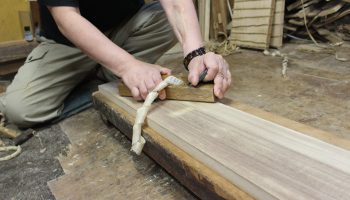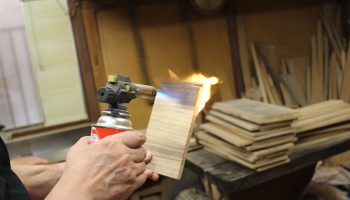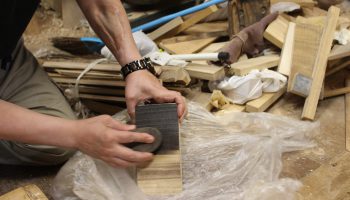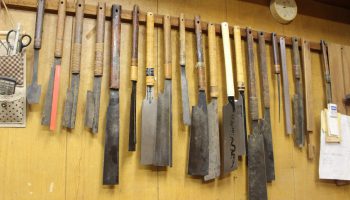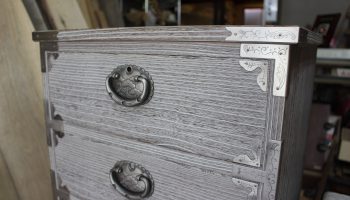Tokyo kiri-Tansu [ Paulownia Bureau ]
Katayama Haruo
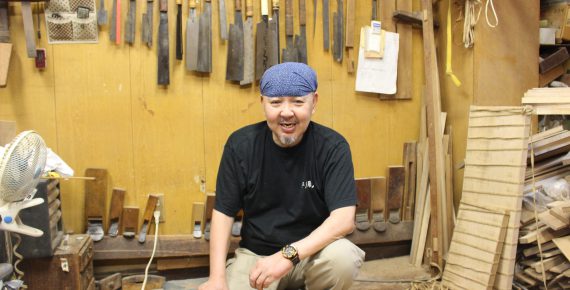
Mr. Haruo Katayama is a kiri (paulownia) tansu cabinet craftsman who runs Katayama Kiri Tansu. He first became a craftsman at 18 and has gained 50 years of experience.
Kiri tansu cabinets are made from the wood of a paulownia tree and at one point in time carried all the necessities of a bride when she left her family to start a new life. In recent years, the tradition of preparing a trousseau has been lost and the size of a typical house has decreased leading to a reduced demand for kiri tansu cabinets. However, a different range of customers has created a new demand. Many women placing orders now say they had wanted to get one when they were getting married but were unable to do so at that time. Paulownia wood used to make kiri tansu cabinets is incredibly lightweight and easy to carry. It also acts as a moisture barrier protecting clothes from discolouration and damage. It has a high temperature resistance meaning that even in the unfortunate event of a fire the kiri tansu cabinet is more likely to survive the damage.
The production of a kiri tansu cabinet begins with selecting the wood and cutting it to the proper length and thickness for its intended use. Next, a plane is used to smooth the surface of the paulownia wood and a burner is used to sear it. (The wood is only seared with a burner for specific finishing touches and is not always used.) After that, the wood is filed and a polishing powder made out of rock powder called ‘Tonoko’ is used to coat the wood. Finally, wax is used to polish the end product.
Mr. Haruo Katayama says he is most particular about people’s line of sight when making kiri tansu cabinets. When people use cabinets they will be standing and looking down at the cabinet so the view from that standpoint should show the most beautiful texture of the wood’s surface.
Even when using materials from the same tree, craftsmen don’t look at each piece of wood individually but together as pieces of the same cabinet to display the best balance of their work. In this way, they have an opportunity to make a high quality tansu cabinet and demonstrate their skills as craftsmen.
Mr. Haruo Katayama also stated that when matching the tansu cabinet to a western style room it’s important to make finishing touches by searing the surface of the wood with a burner, a process which must be done with great care. However, even if a mistake should be made the knowledge and ability to amend it and still end up with a beautiful piece is an essential skill for all good craftsmen.
When asked about a time that left a big impression on him, Mr. Haruo Katayama replied that he had received a special order for a bed made out of paulownia wood. As this wood acts as a moisture barrier it’s the perfect material for a bed.
“When making kiri tansu cabinets there are normally 4-5 different varieties so it’s possible to make them without using any plans, just by keeping the measurements in mind. With a bed, however, I had to start by making blueprints before I could start making the actual product. When compared to a tansu cabinet the planks used for a bed are much longer and without using a machine it took a long time to make everything by hand. In the end, the customer was very happy with the final product which was very gratifying.”
Katayama Kiri Tansu
Address: (Tokyo) Taito, Ryusen 1-18-3
Telephone: 090-4711-9813
